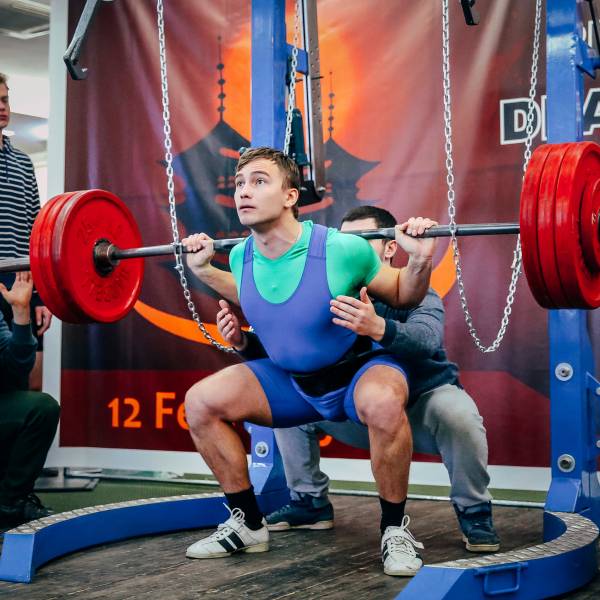(Source: Bruce Klemens)
(Source: Bruce Klemens)
Squat style and technique are pivotal to success in any strength endeavor, but the debate about them between powerlifters and weightlifters is needless and counterproductive.
For powerlifters, the requisite depth of the squat is determined solely by the judges of the federation in which they compete. Considering how many powerlifting federations are out there, this can actually get a little confusing. For the case of this analysis, let’s assume you’re competing in the IPF/USAPL. This means at least 1-2 inches below parallel. A weightlifter, on the other hand, needs to get as low as possible while maintaining a safe spinal position. This can mean anything from 3-4 inches below parallel, to literally ass-to-grass, in the case of some fortunately proportioned and very mobile athletes.
A Tale of Two Squat Depths
The style of squat used in training for the two sports also differs. A lower bar position is popular in powerlifting, and high bar or front squats are popular for the training of weightlifters. These differences arise from the demands of the sport. A low bar back squat puts the individual at a mechanical advantage compared to a high bar back squat or a front squat, which allows them to lift slightly more weight. In the context of a high-level competition, “slightly more” can make a huge difference. The high bar and front squat techniques preferred by weightlifters allow trainees to build leg strength for the competition lifts while staying in as upright a position as possible, in the interest of maximizing carryover to the snatch and clean and jerk.

But there are athletes who like to compete in both powerlifting and weightlifting. How are they to train? Bearing in mind the above, my recommendation for an athlete training for both sports would be:
- When away from any competition, use the high bar squat and front squat in training.
- When approaching a weightlifting competition, change nothing with regards to squat technique.
- When within 12 weeks of a powerlifting competition, begin to gradually lower the bar position you use in training. Not to an extreme extent, as you might see from many athletes who only powerlift, but just low enough to put you in a more advantageous position, while not making you feel so awkward and uncomfortable that your lift suffers.
One final note is the tempo in which the squat is performed. Many weightlifters have a habit of “divebombing” into the hole and riding the bounce on their way up. While this is perfectly fine in theory, the trainee must be cognizant that the bounce is derived from the stretch reflex of their muscles, and not off the connective tissue of their knees and hips. Because while the former is safe, sustainable, and wonderfully effective, the latter can set you up for both injury and missed lifts. An over-fast descent can often lead to a loss of tightness in the trunk, so when you hit the hole with all that speed, you lose your spinal position. Your bracing gets out of whack. Your bar path goes wonky. You get tipped forward. And you end up dumping the bar.
Sound familiar?
While the rebound does have enormous carryover to receiving the bar in the clean and shooting up, doing so improperly can do more harm than good. My recommendations in this regard are:
- Regardless of where you are relative to competition, always focus on descending into the hole under control. This will mean slowing down when first starting out.
- Once you’re able to do that, you can start focusing on progressively speeding up your descent while maintaining tightness.
You might not end up with quite the speed into and out of the hole you used to have, but you’ll have plenty less missed lifts to show for it. Sounds like a fair trade to me.






